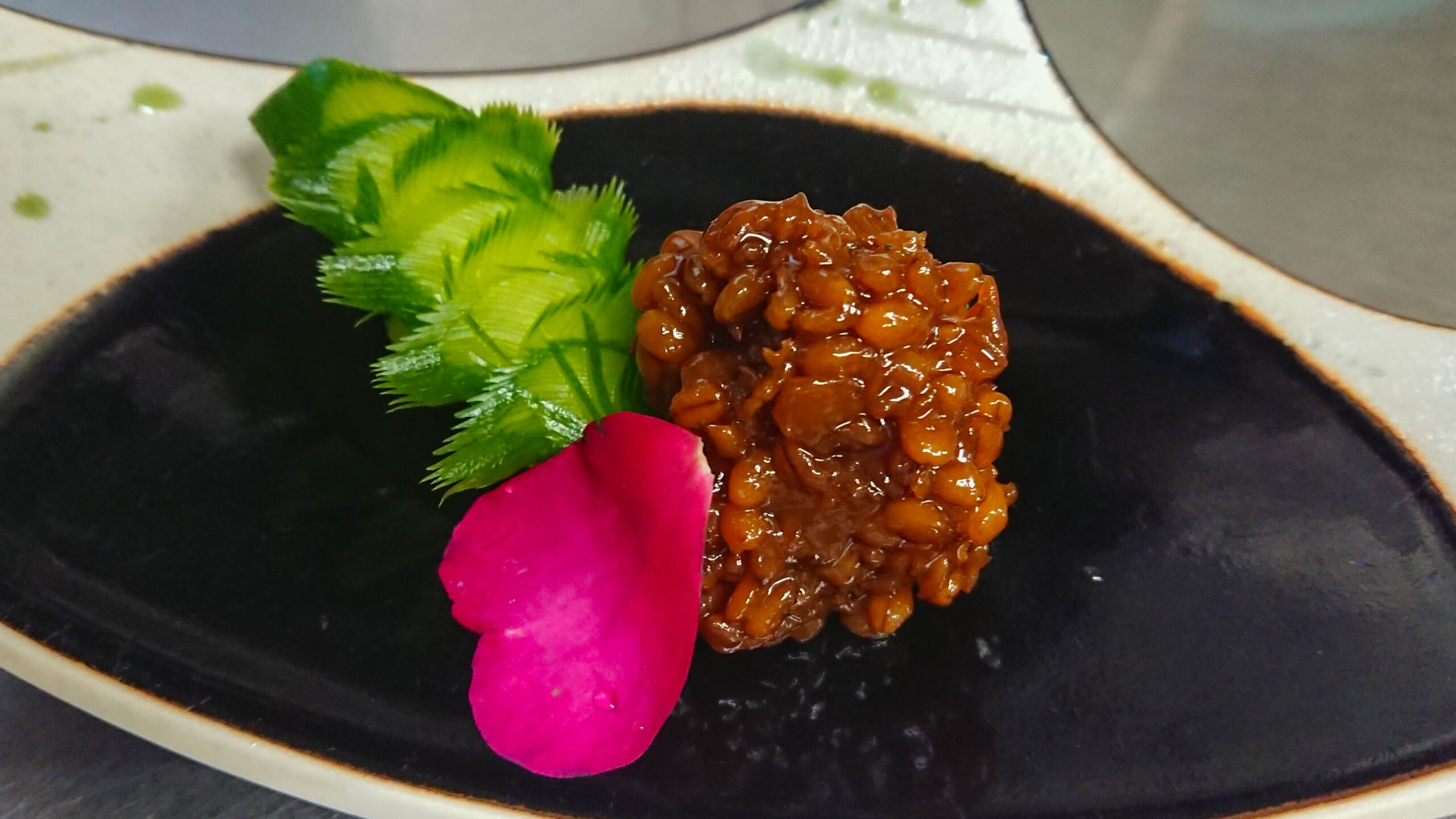
Alright, let’s explore something special from Wakayama – “Kinzanji Miso.” Now, this isn’t your everyday miso; it’s a flavorful, chunky condiment packed with grains like rice, wheat, and soybeans, plus a medley of veggies such as eggplant, cucumber, ginger, and perilla. It’s more like a relish than a paste, and it’s got a fascinating history!
Dish Name: Kinzanji Miso / 金山寺味噌
- Region / Location: Central Wakayama Prefecture.
- Primary Area of Tradition: Central Wakayama Prefecture.
- Main Ingredients: 米 (rice), 麦 (wheat), 大豆 (soybeans), なす (eggplant), うり (cucumber), しょうが (ginger), しそ (perilla) and other vegetables.
How It’s Eaten / Served
Here’s how folks enjoy “Kinzanji Miso”: It’s not just a seasoning; it’s more of a side dish. You can spoon it over rice, serve it alongside grilled fish or sashimi, or enjoy it as a snack with drinks. It also pairs perfectly with Wakayama’s local “tea porridge” (茶がゆ).
Cultural Background and Preservation
So, the story goes that back in 1249, a monk named Kakushin (also known as Hoto Kokushi) from Yura learned how to make “Kinzanji Miso” at a temple in China. He brought the recipe back to Japan and shared it with people in Yuasa and the surrounding areas, which were ideal for making miso and soy sauce. In fact, this area is often called the birthplace of soy sauce and miso!
For about 300 years, farmers made “Kinzanji Miso” for their own use. But then, in the Edo period, the government took notice, and it started to be sold commercially.
Historically, families would make their own “Kinzanji Miso.” They’d use plenty of summer veggies like cucumbers, eggplant, perilla, and ginger, and they’d use three types of “koji” (fermented grains): rice, wheat, and soybeans. You can eat it after about a month of pickling, but it gets even better if you let it mature for a year. Because it keeps well, it’s a handy staple to have around all year.
What’s interesting is that the types of vegetables used and the flavors can vary from store to store and family to family. Everyone has their own special touch!
Today, you can still find “Kinzanji Miso” made using traditional methods in the area from Yuasa to Gobo. It’s a real local treasure.
Additional information:
- Koji (麹): A mold used to ferment foods like soybeans and rice.
- Tsukemono (漬物): Japanese pickles.
- 茶がゆ (Chagayu): A type of Japanese rice porridge made with tea.
The information about regional cuisine featured on this website (Piggy's Grandma of Japan) is summarized and adapted from the Ministry of Agriculture, Forestry and Fisheries of Japan (MAFF) website, "Our Regional Cuisines"Additional commentary is provided based on the unique experiences and perspectives of the site's editors.
The copyright for the original content regarding regional cuisine belongs to the Ministry of Agriculture, Forestry and Fisheries of Japan.
The summaries and adaptations published on this site are intended for informational purposes only. Piggy's Grandma of Japan does not guarantee the accuracy or completeness of this information. For the most accurate and complete details, please refer to the original pages on the MAFF website.


